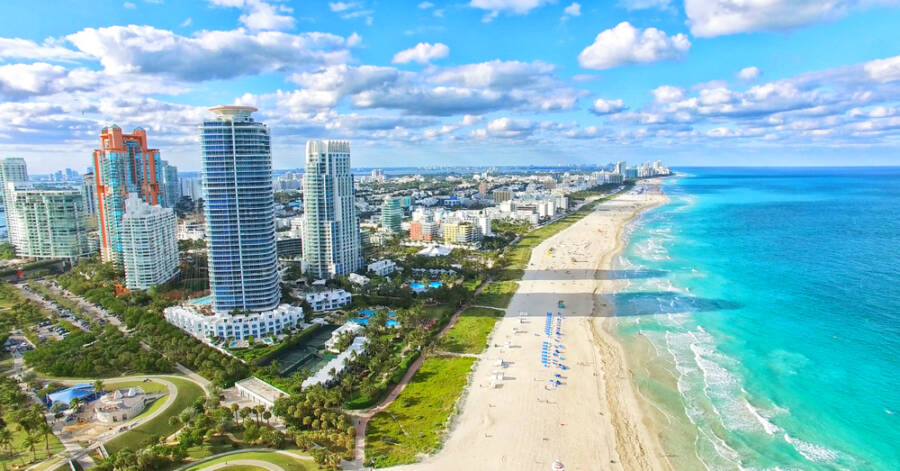We should all start caring about the environment a bit more. Here are some accessible, sustainable practices you can begin today!
Today, Science In The World is taking you on a journey toward a greener, more sustainable future! It’s easy to get caught up in the whirlwind of daily life, but don’t worry! We have the ultimate guide to help you make a positive impact effortlessly.
That’s why we came up with a list of 14 easy sustainable practices scientists recommended. From the knowledge of experts comes a treasure trove of simple yet powerful measures you can take right now. We’re talking about small changes that help our planet in a big way.
So whether you’re a seasoned enthusiast or just dipping your toes into the eco-friendly pool, there’s something everyone can do. Get ready to become a hero for Mother Earth…one effortless step at a time.
Let’s dive in and make our world a better place together!

Sustainable practice: Raise awareness
Educating ourselves and others about sustainability is a powerful tool for making a change in the world.
You can always encourage conversations about environmental issues, share your knowledge on sustainable practices, and support educational programs focusing on environmental conservation.
A well-informed society is likelier to make conscious decisions for a greener future.
Sustainable practice: Consider shared transport
Forget your typical bus routes and timetables set in stone. A new generation of intelligent transport services, like ViaVan, enables passengers to hail a minibus wherever they want, when they want through an app, and to be dropped off at the corner closest to their destination.
Their hope is that, as shared transport, these services solve the problems of congestion and associated pollution created by taxis and private cars.
Sustainable practice: Adopt Eco-Friendly Transportation
While we’re on the topic of transportation, we must mention that this significantly contributes to greenhouse gas emissions.
We can dramatically reduce our carbon footprint by choosing eco-friendly transportation options, including walking, cycling, carpooling, or using public transportation.
Electric vehicles are another fantastic alternative to traditional gasoline-powered cars, promoting a cleaner and greener environment.
Sustainable practice: Do your part in banishing six-pack rings
Ensnaring and lingering, they’ve long been a signature pollutant. However, while plastic six-pack rings might not be as harmful as they once were, even those meeting the required biodegradable standard still take months to decompose.
And even then, it adds to the plastic stew evident in all the world’s oceans. Now, drinks companies are developing alternatives that, if embraced widely, could see an end to six-pack rings for good in favor of small blobs of glue.
The brand Carlsberg, for example, has a new snap pack design that entered stores and, according to their makers, will save “1200 tons of plastic entering the ocean,” which is the equivalent of 60 million plastic bags.
The same company is testing a prototype of a “green fiber” beer bottle made from paper and plant materials. But to do your part, you can simply help by refusing to buy goods that have that awful ring around them.
Sustainable practice: Minimize Single-Use Plastics
And since we’re talking about plastic, single-use plastics are one of today’s most significant environmental challenges. By decreasing our reliance on plastic straws, bags, and other disposable items, we can reduce plastic waste in oceans and landfills.
Opt for reusable options like stainless steel water bottles, cloth bags, and bamboo utensils.
Sustainable practice: Plant some kelp
Forests of seaweed like kelp have been proven to be very efficient at combating acidification and deoxygenation and providing a vast carbon locker that can be cultivated.
This has the added advantage of enriching biodiversity and providing a habitat for numerous links in the marine ecosystem.
Recent work on the feasibility of utilizing seaweed as a carbon sink concluded that producing it on just 0.001% of the 18.5 million square miles of viable ocean, harvesting and sinking the crop in deep water, could offset the carbon production of entire industries including global aquaculture.
And, of course, these forests are fireproof.

Sustainable practice: Embrace renewable energy
Switching to renewable energy sources is one of the most impactful ways you can take steps towards a greener future. Solar power, wind energy, and hydroelectricity are all eco-friendly alternatives to fossil fuels.
Installing solar panels on your rooftop decreases dependency on non-renewable resources, leading to significant cost savings over time.
Sustainable practice: Support your local agriculture
Supporting sustainable agriculture methods is vital for a greener tomorrow. Purchasing locally grown produce, choosing organic whenever you can, and reducing your consumption of meat can lower the environmental impact of food production.
Sustainable farming methods, like crop rotation and permaculture, are essential in preserving biodiversity and soil health.
Sustainable practice: Reuse, Reduce, Recycle
The age-old saying holds true when it comes to sustainability. Reducing trash, reusing items, and recycling materials are important practices that seriously contribute to environmental preservation.
Whenever you can, participate in your local recycling programs, opt for reusable containers rather than disposable ones, and support products made from recycled materials.
Sustainable practice: Optimize your energy consumption
Preserving energy is a big part of sustainability. Simple practices like using energy-efficient devices, turning off lights when you don’t use them, and insulating your home correctly can lead to significant energy savings.
Furthermore, adopting innovative technologies that regulate energy consumption can also contribute to a greener future.
Sustainable practice: Conserve water
Water is a precious resource we have. And conserving it is essential for a greener future. Using water-saving appliances, fixing any leaky faucets in your home, and collecting rainwater are easy but effective ways to decrease water consumption.
By being a bit more mindful of our water usage, we can guarantee that this valuable resource is available for future generations.
Sustainable practice: Create more green spaces
Trees play a vital role in fighting climate change by soaking up carbon dioxide and releasing the oxygen we breathe. Participating in tree-planting initiatives and supporting organizations committed to afforestation can positively impact the environment.
Also, creating green spaces in urban areas enhances biodiversity and provides a refreshing withdrawal from a concrete jungle.
Sustainable practice: Eat a plant-based diet
When Arnold Schwarzenegger switched to a vegan diet, he highlighted the muscle-building alternatives to chicken breast, steak, and eggs. This actor is simply one of a growing list of people who appreciate a plant-based diet’s health-boosting, planet-saving advantages.
While red meat is associated with severe illnesses, from cancer to heart disease, and livestock herds are condemned for excessive greenhouse gas emissions, the Global Burden of Disease Study recommends that we eat more fruits, seeds, nuts, vegetables, and whole grains to lower our overall risk of dying.
A notion that increasingly goes for our environment as well as our bodies.

Sustainable practice: Sell electricity back to the grid
Most automobiles spend about 95% of their time parked. So, as the world slowly switches to electric motors, it makes sense to seize the opportunity presented by this collective battery capacity.
Vehicle-to-grid technology allows plugged-in electric cars to recharge at periods of low power demand and then sell that electricity back into the grid at times of peak demand, turning the vehicle into a profit creator.
It’s also a fantastic way to stabilize the intermittent energy supply from solar and wind so that zero-emission motoring sustains zero-emission power generation.
The editors at Science In The World hope you found this post on sustainable practices informative. Please feel free to share your thoughts with our readers in the comments section below.
In the meantime, if you liked this article, we highly recommend you also read: 8 Solar Panel Benefits: Are They REALLY Worth It?













